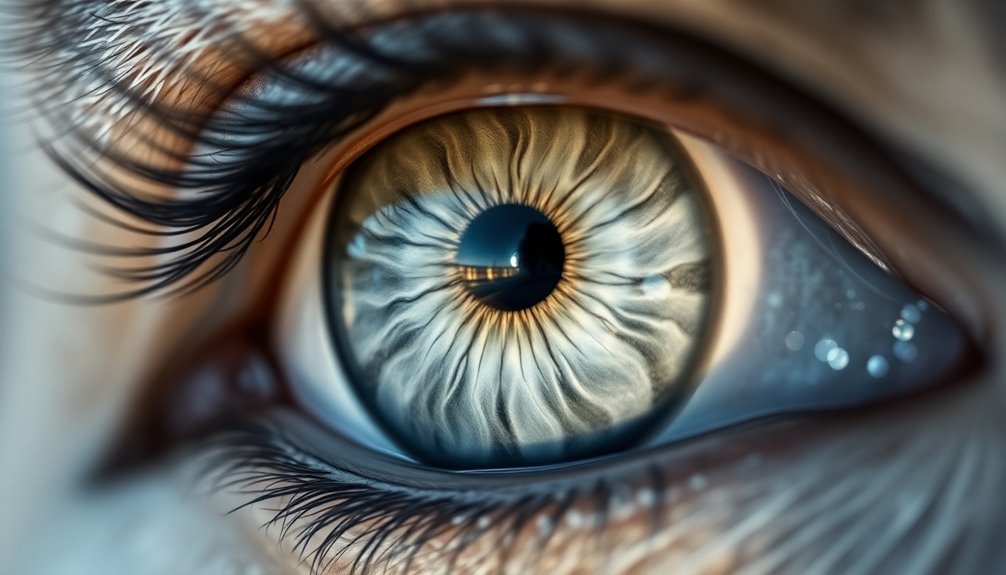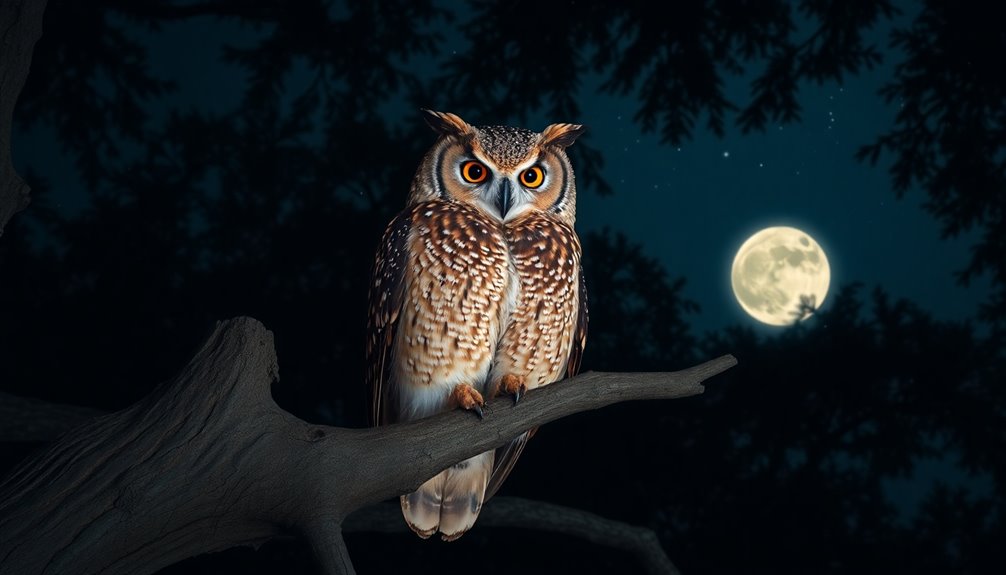Grey eyes are a rare and enchanting feature, representing mystery and uniqueness. You might notice how their silvery tones can shift, evoking emotions and sparking curiosity. Culturally, they're linked to wisdom and creativity, often seen as symbols of freedom and insight. These eyes, found mainly in Northern and Eastern Europe, carry an intriguing genetic background too. With less than 1% of the global population possessing them, they stand out not just for their beauty but also for the rich associations they hold. If you're curious about the connections and meanings behind grey eyes, there's much more to uncover.
Key Takeaways
- Grey eyes symbolize mystery and uniqueness, often associated with wisdom and strategic thinking in various cultures.
- In literature and folklore, grey eyes are romanticized as symbols of freedom, creativity, and sometimes supernatural abilities.
- The calm and tranquil appearance of grey eyes can enhance perceptions of insight and spark curiosity in social interactions.
- People with grey eyes may be viewed as having a distinct perspective on life, contributing to their creativity and interpersonal dynamics.
- The beauty of grey eyes can be accentuated through specific clothing colors, makeup styles, and accessories that complement their cool tones.
The Genetics of Grey Eyes
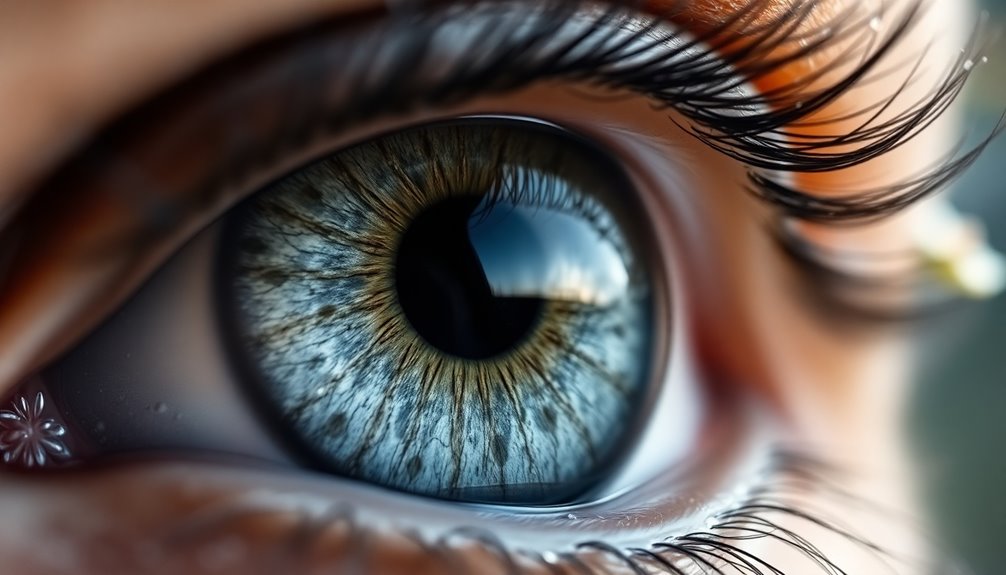
When it comes to the genetics of grey eyes, you might be surprised to learn that they arise from a complex interplay of genetics and melanin distribution. Grey eyes have lower melanin levels than brown eyes but more than blue eyes, creating that unique silvery hue. This genetic trait is quite rare, found in less than 1% of the global population, particularly among Northern and Eastern Europeans.
The inheritance of grey eyes isn't straightforward; it exhibits incomplete dominance and is influenced by multiple genes, primarily OCA2 and HERC2, which play critical roles in pigment production and expression. There are at least 16 genes contributing to the genetics of grey eyes.
This intricate genetic web means that eye color can skip generations, linking grey eyes to blue eyes in a fascinating way.
Interestingly, the appearance of grey eyes can also be influenced by lighting variations and surrounding colors, making them appear different under various conditions. This dynamic nature of grey eyes highlights their unique genetic foundation, emphasizing that their beauty isn't just skin deep, but deeply rooted in biology.
Physical Traits and Variations
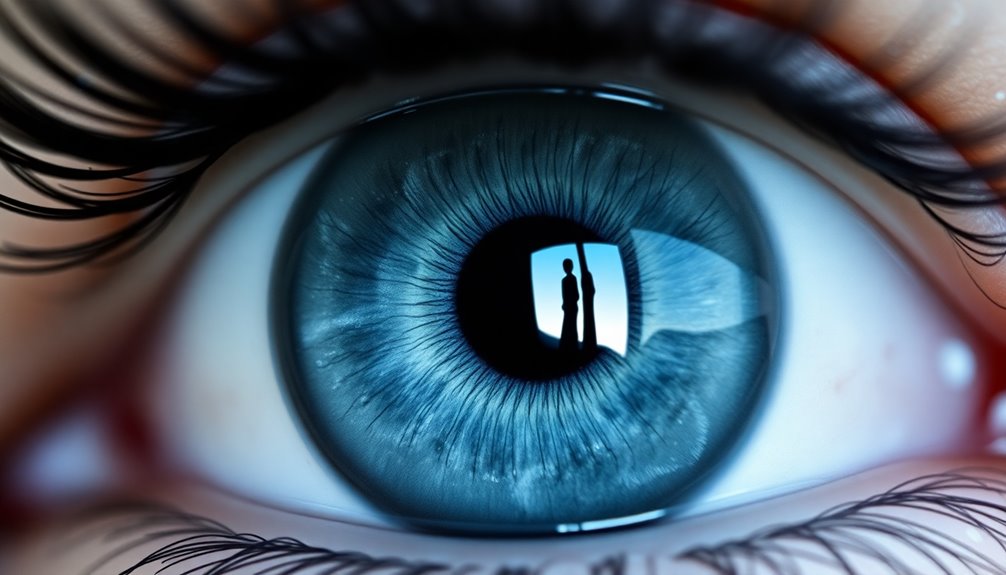
When you look into grey eyes, you might notice a stunning range of shades, from silver to blue-grey.
This unique appearance comes from lower melanin levels compared to brown eyes, along with the intricate structure of the iris.
Each pair of grey eyes is distinct, influenced by light and other pigments, making them truly one-of-a-kind.
Shades of Grey Eyes
Grey eyes showcase a mesmerizing range of shades, each influenced by a combination of melanin levels and light interaction within the iris. You might notice shades like silver, dark steely, blue-grey, and green-grey, all of which create a unique aesthetic that draws in the observer.
The lower melanin concentration in grey eyes, when compared to brown, lends itself to this distinct hue while still being higher than that found in blue eyes.
The structure of the iris, made up of stroma and pigmented epithelium, plays an essential role in light scattering, which ultimately affects how these colors are perceived. This means no two pairs of grey eyes are alike; external factors like lighting and the presence of other pigments can alter their appearance.
Additionally, emotional states can impact pupil dilation, further changing the perceived shades of grey. You may find that someone's grey eyes appear more striking or softer depending on their feelings at the moment.
This interplay of physical traits and emotions enhances the beauty and complexity of grey eyes, making them truly enchanting.
Melanin Levels Explained
The unique beauty of grey eyes stems from their distinct melanin levels, which sit between those of brown and blue eyes. With lower melanin levels than brown eyes but higher than blue, grey eyes display a unique color appearance that can range from silver to dark steely hues. This intriguing iris color results from a balance of eumelanin and pheomelanin, present in moderate and low-moderate levels, respectively.
Variations in grey eye color can manifest as blends with shades of blue, green, or hazel, making each pair of grey eyes one-of-a-kind. The interplay of different pigments and light conditions further enhances this uniqueness, as light scattering influences how the colors are perceived.
Moreover, emotional states can greatly affect pupil dilation, which can alter the perceived shade of your grey eyes. When you experience various feelings, such as excitement or sadness, your pupils expand and contract, subtly changing the way your eye color appears.
This dynamic nature showcases the intricate relationship between melanin levels, pigmentation, and emotional expression, making grey eyes not just visually striking but also deeply expressive.
Iris Structure Influence
Understanding the iris structure helps explain the intriguing variations in grey eye color. The iris of grey eyes consists of a stroma and pigmented epithelium, where light scattering and low melanin levels create their unique color perception. The collagen fibers within the stroma play a vital role in scattering light, enhancing that striking grey appearance.
Here are some key characteristics of grey eyes influenced by their iris structure:
- Light Scattering: The stroma's collagen fibers reflect light, giving grey eyes their distinct shimmer.
- Melanin Levels: A mix of eumelanin and pheomelanin at moderate levels contributes to the overall brightness and hue.
- Shades of Grey: You might notice a range from dark steely grey to light silvery tones, depending on the iris's structural traits.
- Unique Combinations: No two pairs of grey eyes are alike; hints of blue, green, or hazel tones can emerge, showcasing individual iris characteristics.
These variations not only make grey eyes visually engaging but also symbolize the complexity of human beauty.
Global Distribution of Grey Eyes
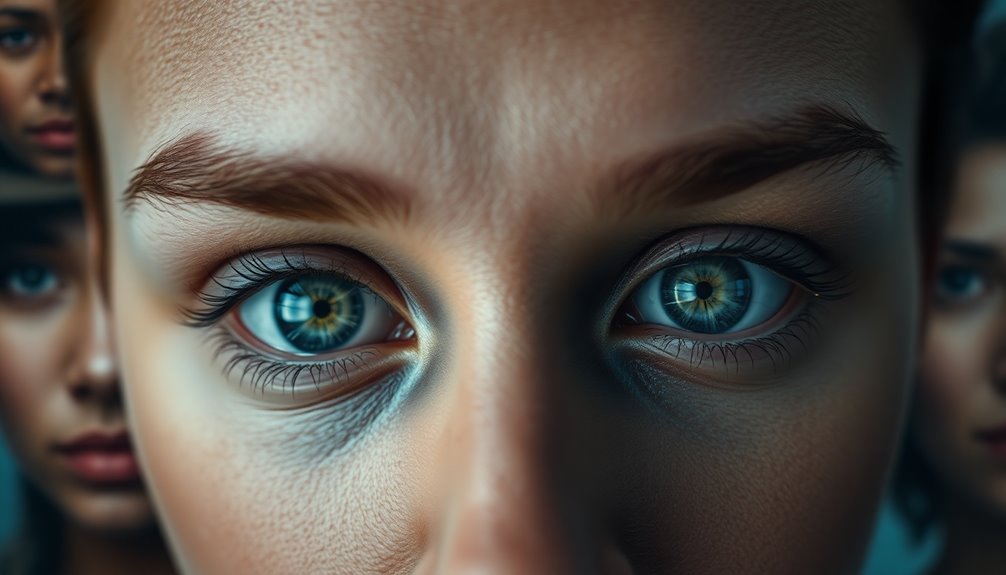
While many eye colors are common across the globe, grey eyes stand out as one of the rarest, found in less than 1% of people worldwide. This translates to approximately 80 million individuals.
The highest concentrations of grey eyes are located in Northern and Eastern Europe, particularly in countries like Estonia and Finland, where around 10% of the population possesses this rare eye color.
In contrast, grey eyes are markedly less common in regions like Asia and Africa, where brown eyes dominate the landscape.
In the United States, although there's a diverse mix of eye colors due to the immigrant population, grey remains an uncommon trait.
The genetic basis for grey eyes often traces back to European ancestry, reinforcing its geographic prevalence.
Health Considerations for Grey Eyes
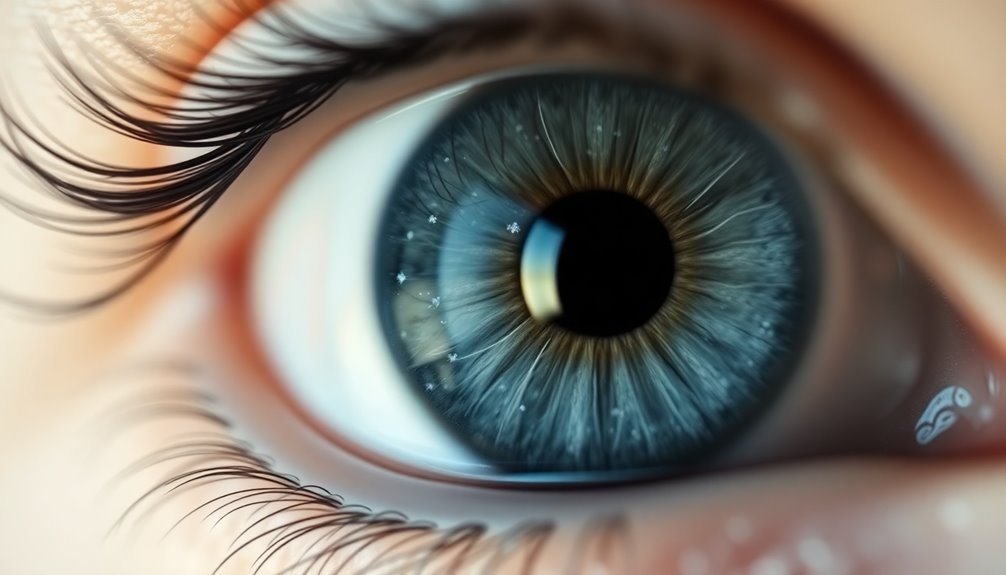
If you have grey eyes, you might notice that bright lights can be especially uncomfortable due to your lower melanin levels.
This increased sensitivity makes regular eye check-ups even more important to catch any potential issues early.
Staying proactive about your eye health can help you enjoy your vibrant grey color without the risks.
Light Sensitivity Issues
Many people with grey eyes find themselves more sensitive to light, which can cause discomfort in bright environments. This increased light sensitivity stems from lower melanin levels in your irises, making you more prone to photophobia.
To protect your eyes, consider the following tips:
- Always wear UV-blocking sunglasses outdoors to shield your eyes from harmful rays.
- Use protective eyewear in bright or reflective settings, like the beach or snow.
- Maintain a balanced diet rich in vitamins A, C, E, and omega-3 fatty acids to support your eye health.
- Regularly check for symptoms of conditions like ocular melanoma, as grey-eyed individuals may face a higher risk. Air quality can also impact your overall health, so consider using an air purifier to improve your living environment.
Regular Eye Check-ups
Regular eye check-ups are vital for anyone with grey eyes due to the heightened risk of specific eye conditions. Since those with grey eyes typically have lower melanin levels, they often experience increased light sensitivity. This makes it important to have annual eye exams to monitor for potential vision changes and to address any emerging concerns promptly. Additionally, individuals with grey eyes should be aware of noise-induced hearing loss, as environmental factors can exacerbate overall health challenges. Understanding the importance of planning ahead for health-related issues is crucial for overall well-being. Regular check-ups can also help identify any issues related to cold medications, which may affect overall health.
| Eye Condition | Risk for Grey Eyes | Recommended Action |
|---|---|---|
| Macular Degeneration | Higher risk | Annual eye exams |
| Ocular Melanoma | Increased risk | Regular screenings |
| Cataracts | Possible development | Routine check-ups |
Regular eye check-ups help you stay ahead of issues like cataracts and photokeratitis, which can be exacerbated by your unique eye characteristics. By maintaining your eye health through routine examinations, you guarantee that any potential problems are detected early. Don't neglect your vision; prioritize your eye health and consult with an eye care specialist regularly. Taking these proactive steps can safeguard your sight and enhance your quality of life.
Cultural Symbolism and Perception
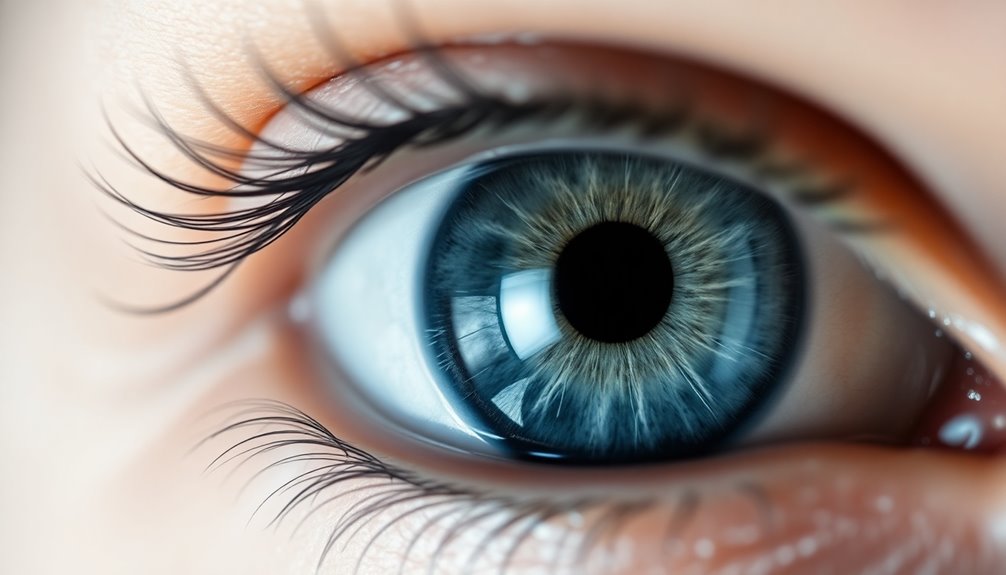
What makes grey eyes so enchanting across different cultures? Their intriguing allure stems from a rich tapestry of cultural symbolism.
Grey eyes are often associated with mystery and uniqueness, embodying traits like wisdom, calmness, and emotional depth. The ancient Greeks even linked grey eyes to the goddess Athena, viewing them as a sign of intelligence and strategic thinking.
You might find that many cultures romanticize the appearance of grey eyes, associating them with freedom and creativity.
Here are some intriguing perceptions of grey eyes:
- Mystical Associations: Often depicted in literature as indicators of supernatural beings or elemental powers.
- Heightened Intuition: Many traditions believe individuals with grey eyes possess heightened intuitive abilities.
- Competitive Nature: Their rarity reflects a distinctive competitive spirit.
- Symbol of Depth: Grey eyes symbolize emotional depth, inviting deeper connections.
This complexity adds to the charm and fascination surrounding grey eyes, making them a celebrated feature across various cultures. In relationships, the lack of empathy often observed in individuals with narcissistic tendencies can further complicate emotional connections.
Whether viewed as a sign of wisdom or a touch of magic, grey eyes certainly leave an unforgettable impression.
Psychological Associations of Grey Eyes
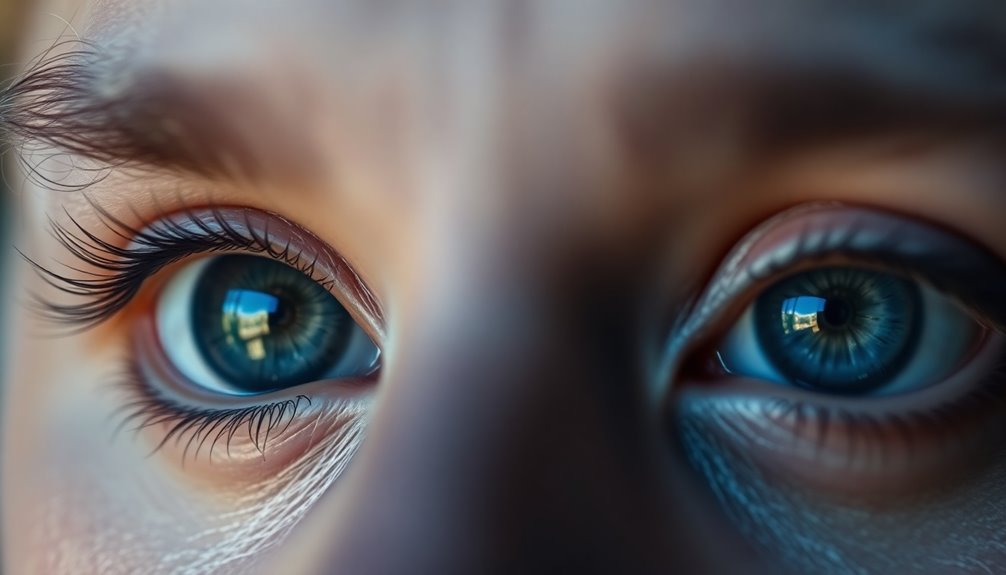
Grey eyes carry a distinctive psychological weight that can considerably influence how individuals are perceived by others. Often associated with calmness, those with grey eyes radiate a gentle aura, balancing emotional depth with tranquility. This unique eye color invites psychological interpretations that link it to wisdom, echoing ancient Greek beliefs that individuals with grey eyes possess strategic thinking and insight.
People often find those with grey eyes mysterious, sparking curiosity and intrigue. This mystique can make you stand out in social settings, as your unique gaze draws attention and prompts others to engage with you on a deeper level.
Furthermore, research indicates that individuals with grey eyes may exhibit competitive traits, suggesting an assertive side that influences personal relationships and social dynamics.
Additionally, grey eyes are sometimes linked to creativity and a sense of freedom. This connection enhances the perception that you're not only unique but also capable of thinking outside the box.
Celebrities With Grey Eyes
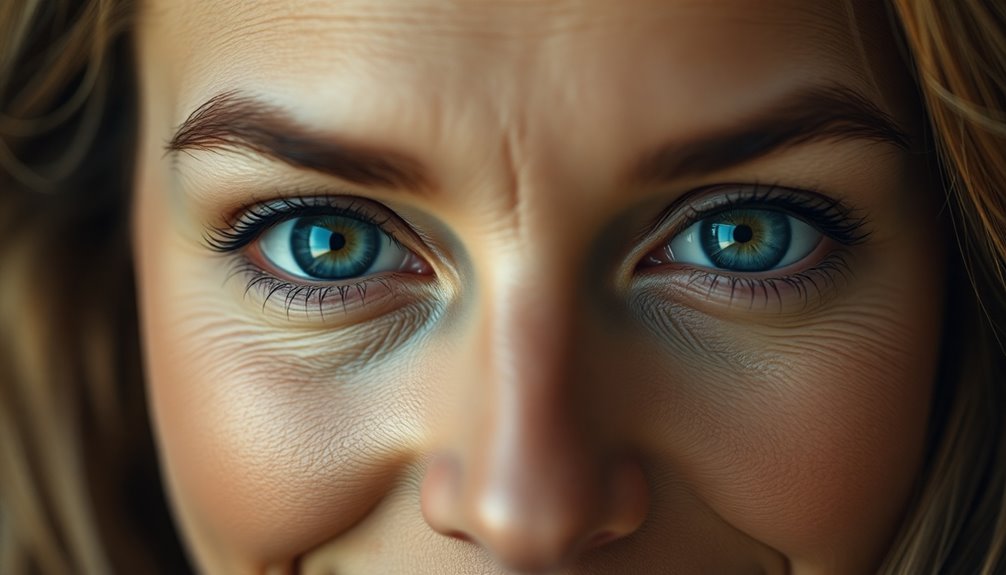
Celebrities with grey eyes often embody the intriguing qualities associated with this rare eye color.
These stars not only capture attention with their unique gaze but also showcase a range of talents and personalities. Here are a few notable celebrities with striking grey eyes:
- Angelina Jolie: Known for her stunning features and philanthropic efforts, her grey eyes add to her enigmatic allure.
- Meryl Streep: Renowned for her versatility, her enchanting gaze enhances her performances in diverse roles.
- Clint Eastwood: This legendary actor and director's intense grey eyes complement his iconic characters, leaving a lasting impression on audiences.
- Shia LaBeouf: With his eclectic film choices, Shia's grey eyes contribute to his distinctive look and artistic persona.
Other celebrities like Jai Courtney and Pink also sport natural grey eyes, adding to their unique public personas.
Even Maisie Williams, famous for her role in "Game of Thrones," enhances her portrayal of complex characters with her enchanting grey gaze.
These celebrities illustrate how grey eyes can create a powerful and memorable presence in the entertainment world.
Characters Featuring Grey Eyes
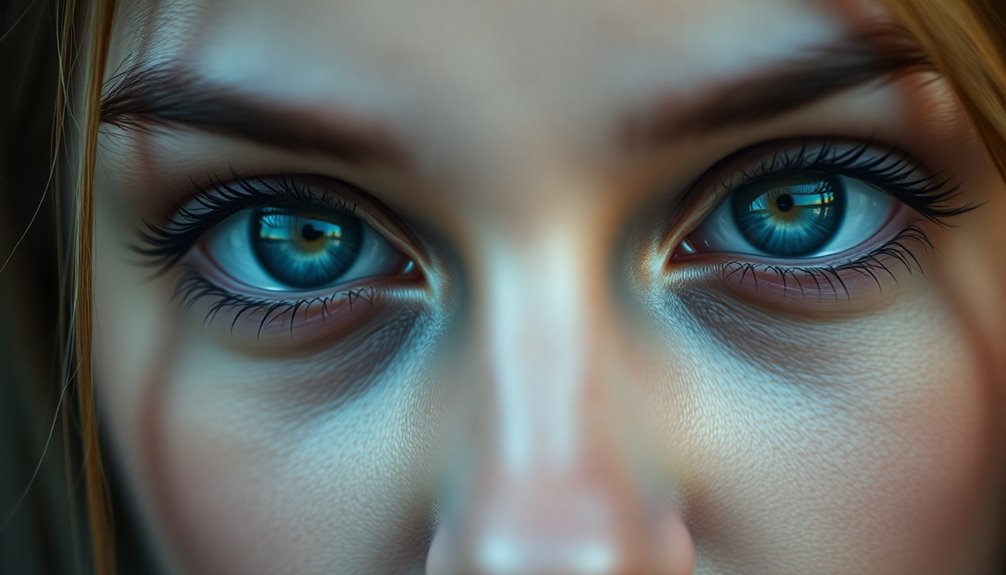
Many memorable fictional characters feature striking grey eyes, adding depth and intrigue to their personalities. Take Draco Malfoy from the "Harry Potter" series, for instance. His grey eyes reflect his complex character, often entangled in ambition and elitism.
In contrast, Loona Lovegood, also from "Harry Potter," uses her grey eyes to symbolize her eccentric nature and unique worldview, making her a beloved character.
In the anime "Kaze no Stigma," Tooru Yukimura stands out with his enchanting grey eyes, which represent his powerful elemental abilities. These eyes not only enhance his character but also signify the elemental powers he wields, adding an exciting layer to his persona.
Another fascinating character is Tsukihi Araragi from the "Monogatari" series. Her grey eyes evoke a mystique that elevates her ethereal presence in the storyline.
Each of these characters showcases how grey eyes can symbolize more than just physical traits; they often embody emotional distance or depth, enriching the narrative and enchanting audiences. These grey-eyed characters remind us of the subtle symbolism that can enhance a story's allure.
Enhancing the Beauty of Grey Eyes
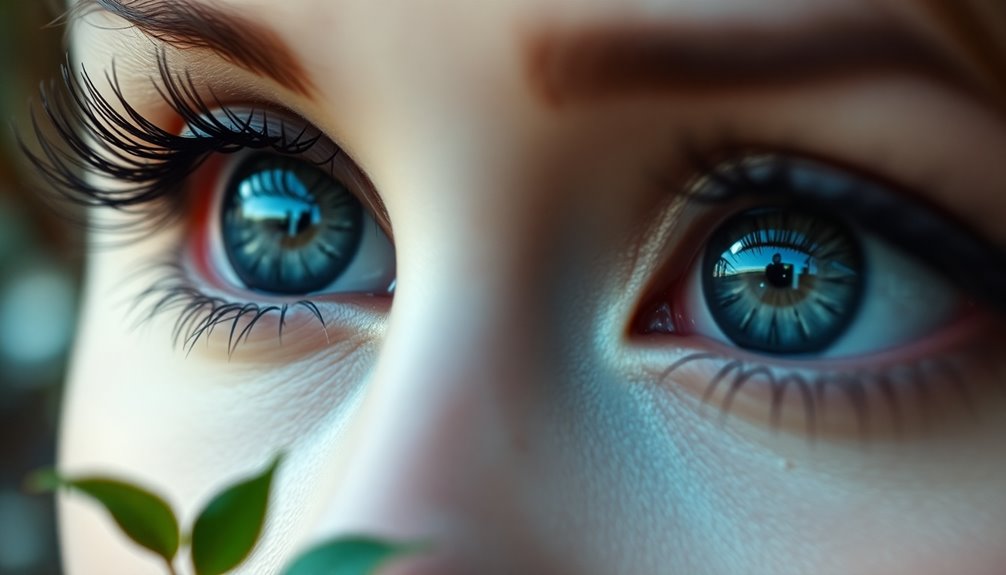
- Use cool tones: Incorporate shades like blue, silver, and lavender in your outfits to accentuate your grey eyes.
- Opt for metallics: Neutral tones and metallics in makeup can amplify the charm of your eyes, while black or dark grey eyeliner defines your look. Additionally, utilizing antioxidant-rich foods can enhance your overall skin health, making your eye area appear more vibrant.
- Choose the right hair color: Cool blondes and ash browns complement grey eyes beautifully, while darker shades create a striking contrast. Regular hydration is also important; staying well-hydrated can help maintain your skin's elasticity and radiance.
- Accessorize wisely: Silver jewelry and colored scarves in shades of blue or green can draw attention to your eyes, enhancing their visual impact.
Don't forget about eye care, too! Regular eye examinations help maintain your eye health, ensuring your grey eyes remain enchanting for years to come. Additionally, styling products like pomades and gels can enhance your overall look, making your grey eyes stand out even more.
With these tips, you're on your way to enhancing the beauty of your grey eyes effortlessly!
Frequently Asked Questions
What Do Grey Eyes Symbolize?
Grey eyes symbolize calmness and mystery, often reflecting a balanced personality.
You might find that those with grey eyes are seen as unique and intriguing, drawing people in.
In some cultures, they're linked to wisdom and strategic thinking, which could enhance your perception of intelligence.
The rarity of grey eyes—less than 1% of the population—adds to their allure, suggesting you possess special qualities that set you apart from others.
What Does It Mean When Someone's Eye Is Grey?
Did you know grey eyes are found in less than 1% of the global population?
When someone's eyes are grey, it often reflects a unique blend of traits like wisdom and calmness. This rare eye color can change based on lighting and clothing, adding to its mystique.
People with grey eyes might be perceived as creative and strategic thinkers, making their gaze not just visually striking but also rich in emotional depth.
What Do Silver Eyes Symbolize?
Silver eyes symbolize uniqueness and depth, often representing qualities like calmness and wisdom.
When you see someone with silver eyes, you might notice a hint of mystery that sets them apart. This rare trait, found in less than 1% of people, can suggest a strategic thinker who approaches challenges with creativity.
In various cultures, these eyes are also linked to enhanced intuition and balance, making them intriguing and enchanting to those around you.
What Is the Grey Eyed Athena Epithet?
When you think of a goddess with eyes as deep as the ocean, you picture Athena, often called "Grey-eyed" or "Glaukopis."
This epithet highlights her unique eye color, symbolizing wisdom and strategic prowess.
You'll notice that her grey eyes embody a perfect balance of calmness and sharp intellect.
Artists and writers alike have celebrated this striking feature, reinforcing her aura of mystery and power throughout history, making her an unforgettable figure in mythology.
Conclusion
To sum up, grey eyes are truly fascinating, blending unique genetics with rich symbolism. Did you know that only about 1% of the world's population has grey eyes? This rarity adds to their allure and mystique. Whether you admire them in celebrities or fictional characters, it's clear that grey eyes hold a special place in our perception. Embrace the beauty of this silvery gaze, and let it remind you of the intriguing stories behind every pair.

